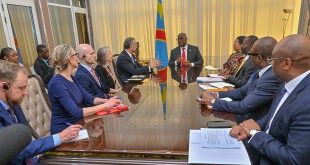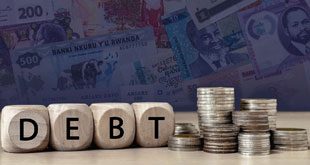
By Donald Kaberuka
The idea that a system can deliver economic development while closing avenues for democracy is not consistent with sustainability
Twenty years ago, someone coined the term “Afro pessimism.” Those were the days of large macroeconomic imbalances, unsustainable debt, slow or negative growth and a rather chaotic beginning to the passage from one-party states to multi-party democracies.
The lost decade is what the 1980s were labelled.
Many African economies are still negotiating complex economic transitions. Nonetheless, since the turn of the New Millennium, Africa has defied pessimists, building a momentum unseen in the last half century on account of both internal factors and a favourable international climate.
The most important has been the cumulative impact of painful macroeconomic and structural reforms executed in the 1980s
This year, 2011, Sub-Saharan Africa will grow at 5.6 percent. Projections for the next year stand at 6.5 percent. In fact, a dozen countries will attain the critical growth rate of 7 percent, which is considered to be the threshold for sustainable poverty reduction.
Unstoppable momentum
This momentum is unstoppable. Nonetheless, there is still a long way to go.
The tragedy unfolding in the Horn of Africa is a brutal reminder that this is a fight not yet fully won. In the Horn of Africa today, ten million people are in need of food aid, two million children suffering from malnutrition, and half a million in danger of starvation.
While this is a tragedy triggered by the worst drought in 60 years, it is largely about our collective failure to end the Somali civil war.
As Amartya Sen reminded us many years ago, famines are a reflection of policy deficits—in this case, the management of the Somali crisis and absence of long term planning vis-a-vis this delicate ecosystem.
Now the priority must be to save lives. The most important thing is to collectively say “drought there may be but famine there will not be.”
The Arab spring
In the same vein, the revolutions in North Africa, have been a much needed wake-up call. They have shown that economic growth which is not inclusive and which promotes “kleptocracies” and closes democratic space cannot be sustained.
The young people in North Africa demonstrated powerfully that the myth of “bread before freedom” was just that — a myth.
Today, I want to suggest to you that sustainable development in Africa must be anchored in the not too controversial principle of economic growth that is STRONG, RESILIENT and INCLUSIVE.
On that we all agree. The issue is how we combine our efforts to get there.
International action

Ever since the Lehmann Brothers’ crisis and the tumultuous events on Wall Street, we have entered what truly can be described as a brave new world.
Who could have imagined that the bond of an OECD country could be relegated to junk status, lower than many low-income countries ratings!
The global economy is in uncharted waters: the fragile banking system, sovereign debt crises, and unemployment; beggar thy neighbour policies and forms of economic nationalism.
When all eyes riveted to the tremors in the Euro zone, I liked the imagery offered by Italian Finance Minister Tremonti who reportedly said that on a sinking Titanic it does not matter whether you are sitting in first class or economy!
The most important issue for the Euro Zone was to stave off another financial calamity and contagion. Despite hesitations, decisive actions were taken.
Whether that works in the longer term is another matter.
As the US economy faces risks of stagflation and Europe battles with debts and public finances, the emerging markets have picked up the slack.
But here is another opportunity wasted. The opportunity of mobilising, unlocking the potential of low-income countries and Africa in particular.
How, we all wish that the type of decisive action, vigour and sense of urgency deployed to deal with the Euro and similar challenges was called upon to deal with the interrelated global issues of today.
They include climate change, global development, and of course, the Doha Development Round, which would permit poor countries to trade their way out of poverty.
The world has irreversibly changed over the last three years. A new architecture is said to be coming into place.
But where is the architect to put all this together, to make sense out of all these changes?
North South relationship
We need not only the global architect — we also need a paradigm shift. Let me illustrate: A decade ago, the Millennium Summit committed to halve income poverty by 2015. The Monterrey Conference on Financing for Development produced a compact for mutual accountability.
Subsequently, the Paris Declaration drew up a road map for aid effectiveness. And, of course, the historic G8 Gleneagles Summit pledged to double aid to Africa.
These were milestones, embodying the very best in advocacy and commitment at the highest level to overcome poverty in our life time.
But, now we know as we approach 2015, Millennium Development Goals will not be attained everywhere.
With major economies still reeling from the aftershocks of the financial crises and the global economy undergoing seismic realignments, it is time to temper expectations that existing commitments will be made, let alone new ones realised.
The critical mass of resources Africa needs to unlock her potential is unlikely to come from rich countries.
We need to accept that the discourse of the last half-century founded on the assumption of ever increasing external public funding is coming to an end.
It is being replaced by a much more complex architecture combining domestic savings, foundations, remittances, leveraging emerging partnerships, gradual access to capital markets as more and more countries get credit ratings.
And this is all predicated on private sector led growth rather than extended dependence on international welfare.
From aid effectiveness to development effectiveness
The expectations and hope of African countries is that we can find:
innovative ways to fund infrastructure;
a way to address issues around agriculture and excessive food price volatility;
means of addressing the skills gap
And above all, we have to find a way to draw on the multiple, diverse, development experiences of the members of the G 20.
On his recent visit to South Africa, Prime Minister David Cameron observed that an African free trade area would increase Africa’s GDP per annum by 62 billion dollars, 20 billion more than combined ODA. That is a fact.
This is the agenda for which the African Development Bank is in the forefront.
Our total commitments this year amount to 8 billion dollars. This is for building infrastructure, supporting fragile states and those emerging from war, partnering with and crowding in private investors and building human capital. Of these 8 billion dollars, a total of two billion dollars will go to support economic integration.
 The Independent Uganda: You get the Truth we Pay the Price
The Independent Uganda: You get the Truth we Pay the Price



